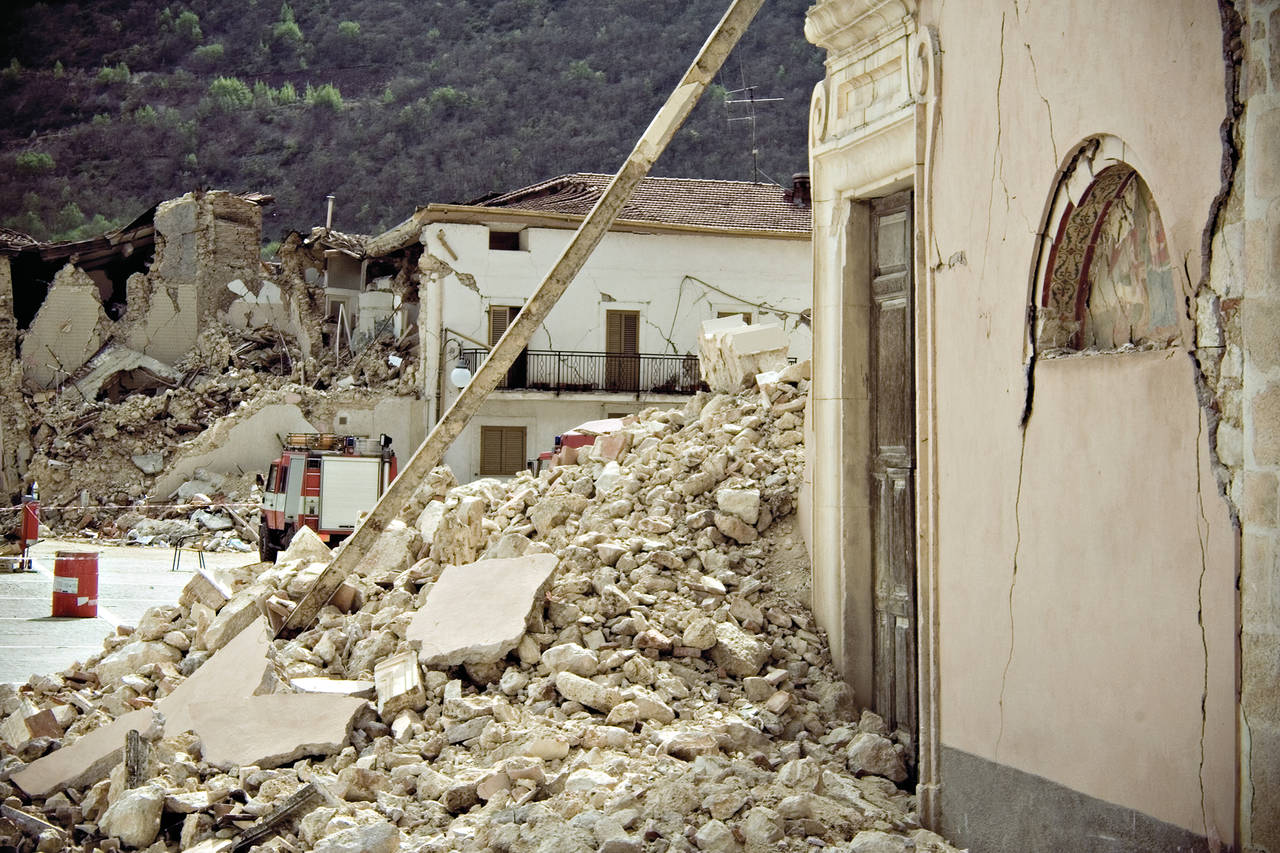foto by Antonio Ottomanelli
photo attestation of Sant‘Eusanio Forconese Villa Sant‘Angelo and Casentino on April 17 2009.
The question of reconstruction and existing buildings
Every time an old town or any consolidated environment faces dramatic and repeated destruction – in the last fifty years in Italy, no longer by war but by the tragic effects of natural catastrophes – the question of how to rebuild the places and spaces lost to the community, dispersed on a physical level but alive in memory, has to be resolved. Every time, in addition to the unhealable wound of the loss of human lives, architecture is burdened with the responsibility for making a professional choice on the reactions and actions to be taken after the loss of places and buildings that are an essential part of a lost and humiliated identity. Any decision is bound to enter into an ethical conflict with the pain and life of people, with the desire to repair and obliterate the effects of an earthquake or a flood, desires which contrast with the need to act rapidly and without delay. Then the questions and choices become urgent: restoration or new buildings? Renovation of the damaged urban tissue or new towns? And, if one were to decide to rebuild from scratch, should the buildings be erected where they used to be, or should one look for a new opportunity? Let us try to identify, calmly and without being carried away by our feelings, a meditated reply, conscious that the decisions we make today will deeply influence the lives of the persons and populations involved.

Moreover, since these events have unfortunately been very traumatic in our country, let us attempt to make a reflection backed by a historical study, in the face of a very complex scenario of requirements, which do not allow any shortcuts or unilateral decisions. According to the line of principle imposed by the emergency and the prospects of individuals and families who suffer the incredible discomfort of life in tents or in the hotels of nearby cities, the time factor would appear all-important: rather than the inevitably longer delay associated with a renovation, a consolidation and recovery of the original buildings and urban tissue, it would appear preferable and quicker to rebuild the new dwellings somewhere else. But once the short-term emergency has been dealt with and a number of dwellings sufficient to house all the homeless has been built, we will have another problem on our hands, namely the reconstruction of ghost towns, the by now abandoned and empty old towns, and to live with the loss of identity, of roots, of whole populations who no longer feel they belong. The inhabitants of the small old towns which have grown over time, with testimonials of history and time, would inevitably be banished to new environments conceived as the real result and embodiment of the emergency, a mirror-Image and eternal memorial of the disaster. If the effects of the events are destructive and catastrophic to the point of not allowing any possibility of recovery, if it is impossible to save the places and testimonials of the life lived by whole generations, then the solution cannot be a complete fake-antique reconstruction of something which does not exist, but the inevitable and painful creation of a new town.












